While the federal government is ramping up measures that increase building energy efficiency, home builders in a handful of states, including North Carolina, are pushing back against more stringent building energy efficiency measures. But what is in the best interest of homeowners?
Details »Insulation Institute Blog
Posts Categorized: Energy Efficiency
Time to Optimize Thermal Performance in 100M Homes
America has more than 100 million leaky homes that are prime for energy efficiency and electrification upgrades, including air sealing and insulation. Without serious engagement by utilities and contractors to address the issue of thermal leakage, the lofty goals the Biden Administration has set for carbon reduction and electrification will not be achieved, says Rick Barnett, a green builder and remodeling contractor. Barnett has been an advocate for thermal envelope efficiency and green building for more than 30 years.
Details »Webinar: How 3E Plus Can Help Schools Apply for Retrofit Grants
The U.S. Department of Energy (DOE) Office of State and Community Energy Programs has issued a grant funding opportunity announcement (FOA) for public K-12 schools. These grants are available to make energy improvements that result in direct reduction to school energy costs, increase energy efficiency, and lead to improvements in teacher and student health, including indoor air quality. Applicants must submit a baseline energy needs assessment to qualify.
Details »It’s the Order of Operations with Heat Pumps-Part 2
Guide Can Help Schools Apply for Retrofit Funds
DOE Updates ZERH Specs, Provides 45L Details
The U.S. Department of Energy (DOE) last month released the latest version of the Zero Energy Ready Home (ZERH) requirements for single-family homes. Version 2 of the ZERH requirements included an update of the thermal envelope insulation levels to those required by the 2021 Residential IECC, whereas the previous version (V1 Rev 8) stipulated 2015 IECC thermal insulation requirements. DOE also highlighted the new tax credits available to builders through the 45L builder energy efficiency tax incentive.
Details »Our Top 10 Blog Posts of 2022
Whew! How did 2022 go so quickly?!
Details »State Doing the Most on Energy Efficiency
With the high cost of utilities, a federal mandate to reduce greenhouse gas emissions, and a renewed push for more energy-efficient buildings, some states have implemented programs and policies that ramp up energy efficiency. In fact, 10 U.S. states are on the leading edge of efficiency because of state policies that prioritize it. Unfortunately, other states are laggards, according to the American Council for an Energy-Efficient Economy’s (ACEEE) newly released 2022 Energy Efficiency Scorecard.
Details »An Active Weekend for Passive House
Building industry members have an opportunity from November 11-13 to learn about Passive House buildings in the U.S. and globally during the International Passive House Open Days. Organized by the International Passive House Association, the event will provide the opportunity for those interested in these highly energy-efficient buildings to learn first-hand how a Passive House build or retrofit works and what it’s like to live and work in a Passive House building.
Details »DOE Promotes $9B for Home Energy Efficiency
On Wednesday, the U.S. Department of Energy (DOE) announced that $9 billion in funding will be available for states and Tribes from the Inflation Reduction Act (IRA) for consumer home energy rebate programs. This funding will allow communities to make homes more energy efficient, upgrade to electric appliances, and make other improvements, such as increasing insulation levels, to reduce energy use.
Details »









